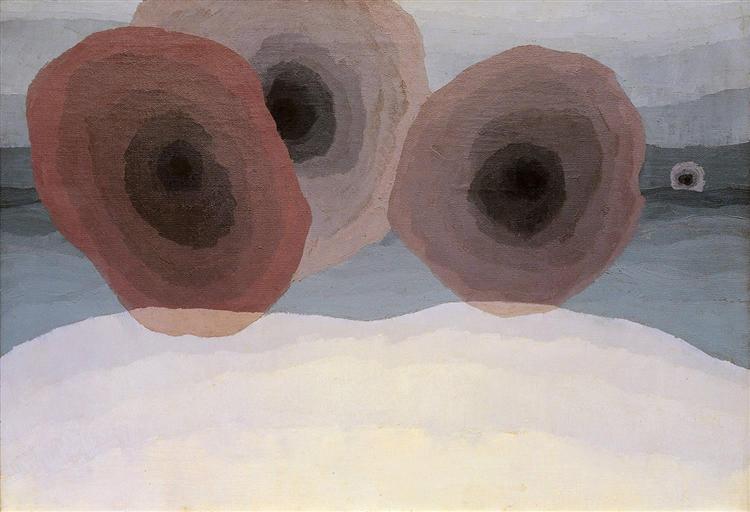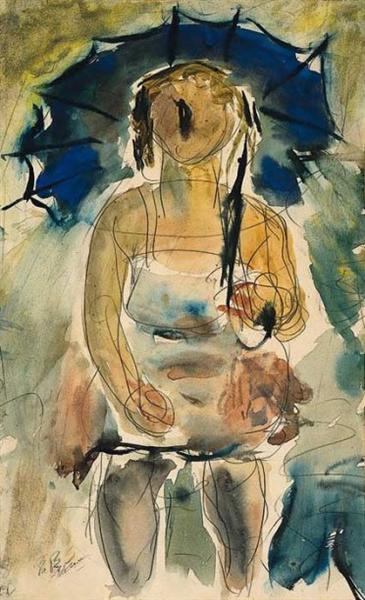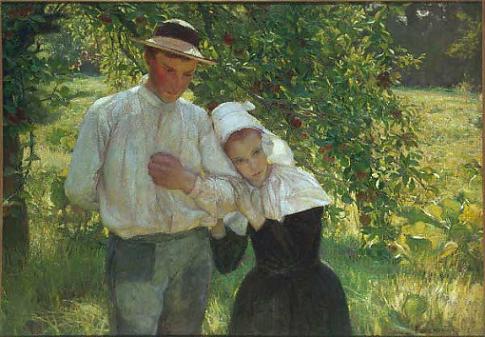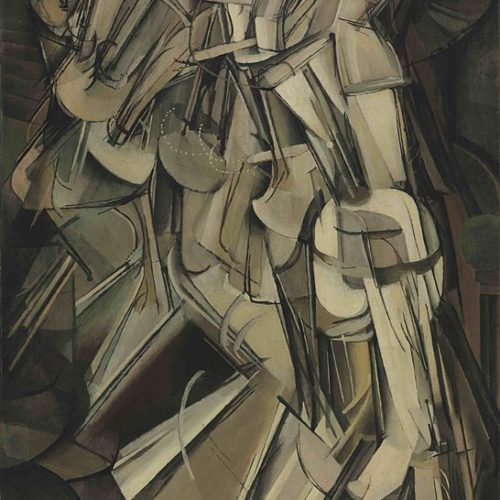A large part of our behaviors and thoughts hinges upon what we call “the self.” This vague concept includes everything we think we are, will be, and have been, but it also includes more than we think. The things that make us feel like ourselves, comfortable in our skin, also find their way to become “bone of our bone and flesh of our flesh,” as William James poetically says about the bonds of close relationships.
How we define our unique self determines a great deal of the decisions and actions you take. This self is, by definition, persistent, and therefore even subtle forces of the self can add up to causing a life of misery, success, or wonder.
The self, even in its great effects on our lives, is not essential to our lives; we are more than what objects of the self are. These things have authority as the self because they have been built on a habit of perceiving things by their usefulness rather than their innate value. Knowing how the self works, and how to see beyond the habit of its world, is the key to personal growth.
The practice of breaking the illusion of selfhood is not to intellectually redefine the self or deny everything you once believed. The method, although it seems unrelated, is to practice being present. To understand why reconnecting with the present moment can dissolve the self, requires us to see what mechanisms are behind the creation of the self.
The Self Imagines the Future
Self-consciousness is derived from the ability to imagine the future. Rather than have a mind tied to the present, only reacting to the things we can immediately perceive, we can imagine how those present things might play a role later in life. Using this ability, we abstract away from the present and allow ourselves to have some insight into the future. It is not difficult to see where this is advantageous to an animal who relies on intelligently predicting and preparing for the future.
But in predicting the future, we start to see things in terms of their potential usefulness or harmfulness, while suppressing a more original gut-level value judgement. A book loses its tactile and visual values to the anticipation of the treasured knowledge that lies inside of it. That is how objects can be removed from the present world and become partly abstracted.
Determining that things have potential value, means that we must believe that they must persist to that point of usefulness. The more value they have for us, the more we belief (or hope) that they will persist. We are dependent on them lasting to the point of payoff; after all, we have already sacrificed their present value for a longer-term reward. Bypassing the urge to eat cake so that one can enjoy it at the end of the day will be totally undermined if someone finishes the cake before your planned time of gratification.

This belief and reliance on the persistence of an object gives them a strangely high priority in our minds’ psychology. Those things with high potential value and reliability become part of the self. These things, when lasting and valuable, lie closer on the same spectrum of selfhood as the body and spirit.
How does simply being reliant on something that might last make that thing part of the self? It is a strange and impersonal definition for something we know so well.
Me and Mine
To answer the previously stated question we must question our relationship with what we traditionally label as part of ourselves. These things include our personality traits, our mental disposition towards the world, our bodies, and many also consider our relationships an equivalent part of ourselves.
These things, especially the body and mental disposition, meet our criteria perfectly. We do not even imagine what life would be like if we were missing part of our body, or if suddenly we became blind, or even if we went from shy in childhood to outgoing in adulthood. For any of these alterations would be an alteration of the self.
Our ability to see is something which not only has obvious present value, but also future value which we wish to continue having. If a doctor told you with certainty that in a few months you will be blind, you will not have an emotion concerning the present. You will feel the dread of the unessential self. The object of vision lost its future value, and part of the self is lost.

The self is not a defined object living only on the surface of our skin and underneath. Rather, the self is a set of objects which can have value in another potential situation. The storage of food of a deserted person becomes the self when it is necessary to survive into the future. Losing it would feel like losing your life, and panic from its loss would be more dreadful than the hunger than will follow.
All these things that have the potential to be categorized in the self, all share the common quality of being valuable in potentia. The loss of a limb or spouse hurts not only in the present moment upon perceiving the loss, but also in the abstraction of the future. We ask: How will I be able to go on without him or her? How can I do my job without the use of my arm? In essence, in the event of a lost piece of the self, we ask “how can I continue to be myself?”
These things we call “mine” are truly part of the “me.” Anything we “possess” is something we expect to last to a future time, and according to the previous definition, those possessions make the “me.”
“In its widest possible sense, however, a man’s Me is the sum total of all that he can call his, not only his body and his psychic powers, but his clothes and his house, his wife and children, his ancestors and friends, his reputation and works, his land and horses, and yacht and bank account. All these things give him the same emotions. If they wax and prosper, he feels triumphant; if they dwindle and die away, he feels cast down.”
William James
There seems to be no better metaphor for the self than speaking of the self as a possession of things, qualities, traits, beliefs, and abilities. This in many senses is not metaphorical because the things we possess are in fact part of our self-definition. The things which have abstract value, potential value, usefulness as equipment, all operate on the same psychological level as the things which we call part of ourselves, even the most intimate parts are treated as possession are, like our personality or our perception of things. We cling to our beliefs like a child clings to a blanket, for which she might grow cold without. Anything that has once had a benefit beyond the present is on the same spectrum of the self.
Even the hatred of someone, if it brings you closer to your own social clan, can become a part of your identity. How often do we identify ourselves in opposition of a certain group or belief, rather than have a positive belief ourselves? The rumination of hatred is something that we enjoy even as it gives us stress.
No-Self
Because we attach ourselves to the expectation that things will remain the same, we are able to do many things. We are able to see an object as potentially useful and create a tool out of it. We are able to create method of inquiry getting us closer to seeing the objective world through mathematical laws. We are able to imagine the effects a love letter might have on its recipient. And we are able to create works of art to serve as the fingerprint of all humankind.

But this ability is fundamentally an illusion of permanence. As we depend upon and identify with the future value of objects, abstract or perceptible, we lose touch with what truly is essential: the present.
What happens when the objects and possessions of the self are removed? What is left must be what is essential. Many would call this the soul. But there is nothing left except the inevitable perceiving of what is here-and-now without any hope for it being here-and-now in the future.
What is left is usually an unwelcome confrontation with the impermanence of life. Trauma is said to be horrible not from the pain itself, but for the abrupt destruction of the most intimate parts of the self. The trauma is the showing to us, with no sympathy, the impermanence of everything we wished was permanent and reliable about us.
But there are ways of slowly confronting these trials of impermanence through practice. What is left, after the self is removed, might be what the Buddhists call the No-Self, describable only in what it is not: the self. Others might call it the Self or Subject (both capitalized).
The practice of No-Self is difficult because seeing things as having potential value is often beneficial and deeply carved into our ways of thinking. Even as we put the world into words, we partly we make it into something potential. The act of naming something makes it partly into something communicable and therefore potential. That is what makes this meditation so difficult to practice, there is nothing rational to get you to Enlightenment. It all operates on perceiving the present experience.
Ultimately the No-self claims that we need to be reminded that there is value in the ever-changing present. It is a reminder that we too often see the world as potential rather than what is. Without ever becoming present, the potential good only leaves more potential, never to be cashed in upon. Why take care of your health if you will never presently live and appreciate the health? It is a balance we must constantly tinker with to allow for both self-growth and no-self-growth.

